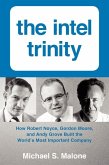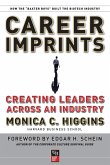A landmark chip like the P6 or Pentium 4 doesn't just happen. It takes a confluence of brilliant minds, dedication for beyond the ordinary, and management that nurtures the vision while keeping a firm hand on the project tiller.
As chief architect of the P6, Robert Colwell offers a unique perspective as he unfolds the saga of a project that ballooned from a few architects to hundreds of engineers, many just out of school. For more than a treatise on project management, The Pentium Chronicles gives the rationale, the personal triumphs, and the humor that characterized the P6 project, an undertaking that broke all technical boundaries by being the first to try an out-of order, speculative super-scalar architecture in a microprocessor.
In refreshingly down-to-earth language, organized around a framework "we wish we had known about then," Chronicles describes the architecture and key decisions that shaped the P6, Intel's most successful chip to date. Colwell's inimitable style will have readers laughing out loud at the project team's creative solutions to well-known problems. From architectural planning in a storage room jimmied open with a credit card, to a marketing presentation using shopping carts, he takes readers through events from the projects beginning through its production. As Colwell himself recognizes, success is all about learning from others, and Chronicles is filled with stories of ordinary and exceptional people and frank assessments of "oops" moments, like the infamous FDIV bug.
As its subtitle implies, the book looks beyond RTL models and transistors to the Intel culture, often poking fun at corporate policies, like team-building exercises in which engineers ruthlessly shoot down each other's plans. Whatever your level of computing expertise, Chronicles will delight and inform you, leaving you with a better understanding of what it takes to create and grow a winning product.
As chief architect of the P6, Robert Colwell offers a unique perspective as he unfolds the saga of a project that ballooned from a few architects to hundreds of engineers, many just out of school. For more than a treatise on project management, The Pentium Chronicles gives the rationale, the personal triumphs, and the humor that characterized the P6 project, an undertaking that broke all technical boundaries by being the first to try an out-of order, speculative super-scalar architecture in a microprocessor.
In refreshingly down-to-earth language, organized around a framework "we wish we had known about then," Chronicles describes the architecture and key decisions that shaped the P6, Intel's most successful chip to date. Colwell's inimitable style will have readers laughing out loud at the project team's creative solutions to well-known problems. From architectural planning in a storage room jimmied open with a credit card, to a marketing presentation using shopping carts, he takes readers through events from the projects beginning through its production. As Colwell himself recognizes, success is all about learning from others, and Chronicles is filled with stories of ordinary and exceptional people and frank assessments of "oops" moments, like the infamous FDIV bug.
As its subtitle implies, the book looks beyond RTL models and transistors to the Intel culture, often poking fun at corporate policies, like team-building exercises in which engineers ruthlessly shoot down each other's plans. Whatever your level of computing expertise, Chronicles will delight and inform you, leaving you with a better understanding of what it takes to create and grow a winning product.
"...the book will particularly appeal to engineers working in the computing industry." (Physics World, February 2006)
"...it reads like a novel...The story is chronicled by insider Colwell in a style that commands reader attention...highly recommended." (CHOICE, May 2006)
"...an anecdotal account of its development from someone who was in on it from the start...there is something there for everyone about life in a large organization." (Cool Tech Reviews, March 6, 2006)
"Such a perfect miscellany of...experiences finely blended with humor and reality is a sumptuous feast for engineers and project managers...marvelous piece of computer history." (TechBulletin, February 10, 2006)
"This particular book on the genesis of Intel's groundbreaking P6 programme of the early 1990s...gives us some worthwhile pointers...a worthy book, and worth a recommendation..." (TechWorld, February 7, 2006)
"This insightful book promises to become a classic, and the reader is warned that it is hard to put down." (Computing Reviews.com, February 23, 2005)
"...the book will particularly appeal to engineers working in the computing industry." (Physics World, February 2006)
"...an anecdotal account of its development from someone who was in on it from the start...there is something there for everyone about life in a large organization." (Cool Tech Reviews, March 6, 2006)
"Such a perfect miscellany of...experiences finely blended with humor and reality is a sumptuous feast for engineers and project managers...marvelous piece of computer history." (TechBulletin, February 10, 2006)
"This particular book on the genesis of Intel's groundbreaking P6 programme of the early 1990s...gives us some worthwhile pointers...a worthy book, and worth a recommendation..." (TechWorld, February 7, 2006)
"This insightful book promises to become a classic, and the reader is warned that it is hard to put down." (Computing Reviews.com, February 23, 2005)
"...the book will particularly appeal to engineers working in the computing industry." (Physics World, February 2006)








